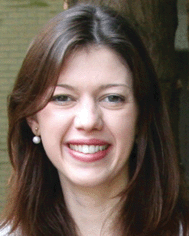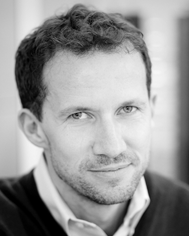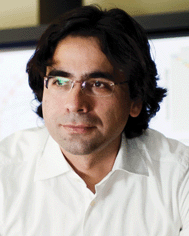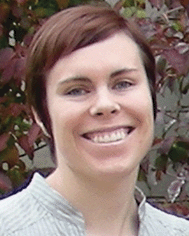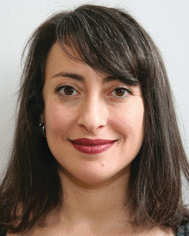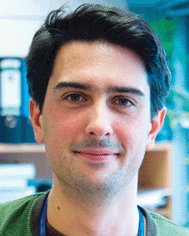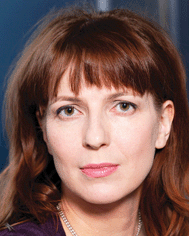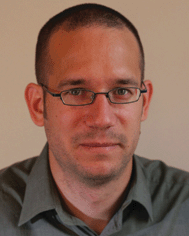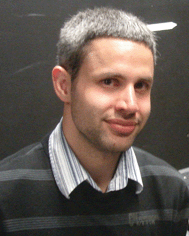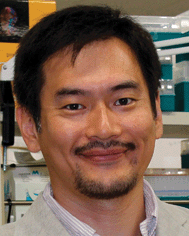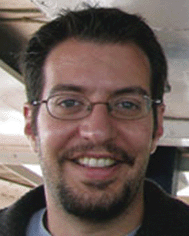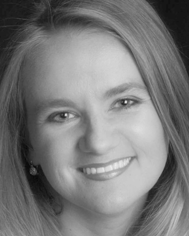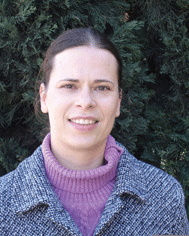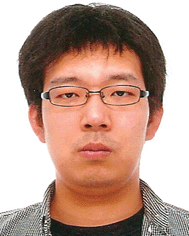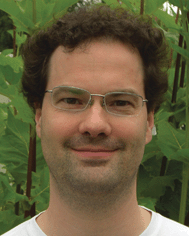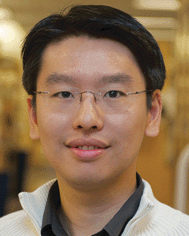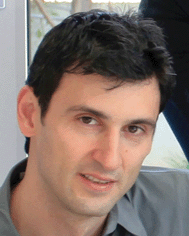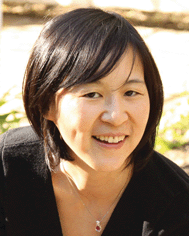DOI: 10.1039/C2MB90034C
(Profile)
Mol. BioSyst., 2012, 8, 2461-2465
Emerging investigators contributors 2012
Introduction to the issue
This themed issue of Molecular BioSystems (MBS) focuses on new and emerging investigators in the field of chemical biology as it interfaces with systems biology and the -omic sciences. We are publishing this issue not only to promote and feature the talent there is in these three communities and the excellent research they are producing, but also to demonstrate the scope and quality of the MBS journal and its support of emerging researchers.As we go to press we are just finalising the 2012 MBS Early Career Lectureship, which will be presented to Thijn Brummelkamp (The Netherlands Cancer Institute) at the International Conference on Systems Biology (ICSB) in Toronto, Canada. Thijn is being recognised as he first described stable RNA interference, which is widely used to study gene function. The MBS Editorial Board and staff are firmly committed to promoting the work of all our authors and in particular those at the beginning of their independent careers, and we hope that you will enjoy reading the diverse and high calibre work in this themed issue dedicated to emerging investigators.
Harpal Minhas, Editor
Ana Cristina Andreazza
I started my career as Pharmacist and moved to science to study the antioxidant properties of flavonoids at the Biotechnology Institute at University of Caxias do Sul, Brazil. Over the years I became interested in the involvement of redox mechanisms in the brain, which motivated me to pursue a doctorate degree. As part of my thesis, I investigated the influence of oxidative stress damage in major psychiatric disorders (i.e. bipolar disorder and schizophrenia. To follow my goals in research, I accepted a postdoctoral position at University of British Columbia in 2008 to study the oxidative damage to specific mitochondrial proteins in postmortem prefrontal cortex from patients with bipolar disorder and schizophrenia. Currently, I am a Scientist at Centre for Addiction Mental Health and an Assistant Professor in the Department of Psychiatry at University of Toronto. I am still fascinated by the brain and its redox biology, and my research line is now focused in exploring how redox modification to proteins changes relevant pathways to synapse modulation.
Chris Bakal
Chris Bakal was born in Canada and obtained a BSc from the University of British Columbia where he worked in the laboratory of Julian Davies. In 2005 he obtained his PhD from the University of Toronto. From 2005–2009, Chris was a postdoctoral fellow at Harvard Medical School in the laboratory of Norbert Perrimon, where he developed novel experimental and computational technologies in order to describe signalling networks that regulate cell morphology. In 2009 he was appointed a Team Leader at the Institute of Cancer Research in London, UK and awarded a Research Career Development Fellowship from the Wellcome Trust.
Nuno Bandeira
Nuno Bandeira is an Assistant Professor at the Skaggs School of Pharmacy and Pharmaceutical Sciences at the University of California in San Diego. Having been trained in Computer Science and Bioinformatics, his research focuses on the development of algorithms for interpretation of proteomics and metabolomics mass spectrometry data from endogenous and digested peptides, discovery and localization of post-translational modifications, protein–protein interactions, sequencing of non-linear peptides with unknown amino acids and characterization of microbial, marine, reptile and plant natural products. The ultimate goal of his lab is to enable reliable, reproducible and automated identification of any class of molecules suitable for analysis with mass spectrometry instruments.
Erin E. Carlson
Erin E. Carlson received her BA at St. Olaf College in 2000. She went on to the University of Wisconsin – Madison, and earned a PhD in organic chemistry in 2005 under the direction of Professor Laura L. Kiessling. Subsequently, Dr Carlson pursued postdoctoral studies at the Scripps Research Institute with Professor Benjamin F. Cravatt. In 2008, Dr Carlson joined the chemistry faculty at Indiana University. Her research group works at the interface of chemistry and biology, focusing on the development and application of new technologies to explore the mechanisms of bacterial pathogenesis and identify potential therapeutic agents.
Leah E. Cowen
Leah E. Cowen PhD is an Assistant Professor in the Department of Molecular Genetics at the University of Toronto, and Canada Research Chair in Microbial Genomics and Infectious Disease. She completed her BSc in Microbiology and Immunology at the University of British Columbia and pursued her PhD with Jim Anderson and Linda Kohn at the University of Toronto, focused on the genomic architecture of adaptation to antifungal drugs. As a postdoctoral fellow with Susan Lindquist at the Whitehead Institute, she investigated how the molecular chaperone Hsp90 impacts fungal evolution and phenotypic diversity. She assumed her faculty position in 2007 and is recognized with a Burroughs Welcome Fund CABS and Merck Irving S. Sigal Memorial Award. Her research focuses on molecular mechanisms by which cellular signaling and stress responses govern fungal evolution, development, drug resistance, and pathogenesis and further explores how these mechanisms can be harnessed for treating fungal infectious disease.
Marc-Emmanuel Dumas
Marc-Emmanuel Dumas PhD, MEng, MSc, BEng, BSc, MRSC, MSB was awarded a PhD in “Biochemistry, Molecular and Cell Biology” in 2002. Dr Dumas has worked in the field of metabolomics and metabonomics since 1998. After initially joining Imperial College London in 2002, Dr Dumas was appointed as CNRS scientist in France at Ecole Normale Supérieure de Lyon (2007–2009), where he was awarded a prestigious young investigator award in Chemistry from the Agence Nationale de la Recherche (ANR). In 2009 Dr Dumas took an appointment as Lecturer in Systems Biomedicine at Imperial College London to investigate the genomics, metagenomics and network biology of metabolic profiles in cardiometabolic diseases.
Tuulia Hyötyläinen
After finishing her PhD in analytical chemistry from the University of Helsinki, Finland, Tuulia Hyötyläinen continued her research in the University of Helsinki, first as a postdoc., and later as a group leader and as adjunct professor. At 2009 she moved to VTT Technical Research Center of Finland to work as team leader of Metabolomics. Her main research interests lie in instrumental analytical techniques, mainly chromatographic techniques and mass spectrometry, applied to the metabolomics studies. She has published over 100 scientific articles.
Björn Junker
Björn Junker holds a Masters in Biotechnology from the European School of Biotechnology Strasbourg (ESBS), France. In 2004 he obtained a PhD from Potsdam University for his research on potato tuber central metabolism. He then joined the Leibniz Institute of Plant Genetics and Crop Plant Research (IPK) in Gatersleben, Germany, where he supervised the development of systems biology tools. After a postdoctoral employment on plant metabolic flux analysis in the US, in 2008 he became leader of the Systems Biology Research Group again at the IPK. Since 2011 he additionally holds a temporary professorship at the University of Halle, Germany.
Edward Lemke
Edward Lemke is an Emmy Noether Group leader at the EMBL in Heidelberg. Originally trained as a physical chemist, he now specializes in the development and application of advanced and single molecule fluorescence approaches in biology. His group has a particular interest in understanding the role of intrinsically disordered proteins, which are involved in the cause of many neurodegenerative diseases. However, these proteins are also enriched in molecular machines that have precise and vital functions for the cell, such as chromatin structure and the nuclear pore complex. To study the fast dynamics of these molecular machines, his group uses an interdisciplinary approach and combines tools ranging from chemical biology via cell biology to physics.
Hisao Moriya
Hisao Moriya is a designated Associate Professor of Research Core for Interdisciplinary Sciences at Okayama University. He completed his PhD in Biology at Kobe University in 1998 under the supervision of Professor Katsumi Isono. After his engagement in the study of the glucose-sensing system in yeast at Prof. Mark Johnston's lab at Washington University, he joined to Dr Hiroaki Kitano's group (Kitano Symbiotic Systems Project, JST), where he started the study on robustness of cellular systems which is the main topic of his current research. In 2006, he was selected as a researcher of JST PRESTO project “The Dynamic Mechanism of and Fundamental Technology for Biological System”. In 2009, he moved to Okayama University where he started his own group.
Alexander Francis Palazzo
Alexander Francis Palazzo was born and raised in Montreal, Canada. As a graduate student in Gregg Gundersen's laboratory at Columbia University, he discovered two major pathways that regulate cell polarity in migrating fibroblasts. After receiving his PhD in 2003, he moved to Tom Rapoport's laboratory at Harvard Medical School where he was a Jane Coffin Childs Postdoctoral Fellow. There he investigated how secretory mRNA associates with the endoplasmic reticulum in mammalian cells. In the course of his studies, he made the surprising discovery that small RNA elements present in mRNAs that code for secretory proteins, can promote the nuclear export of newly synthesized mRNAs. Alex joined the faculty at the University of Toronto in 2009 where he is an Assistant Professor in the Department of Biochemistry.
Natasa Przulj
Dr Natasa Przulj is a Reader (US equivalent: Associate Professor) in the Department of Computing, Imperial College London. She was an Assistant Professor in the Computer Science Department, University of California, Irvine. She gained her PhD in Computer Science from the University of Toronto in 2005. She received a USA NSF CAREER award for developing computational tools for analyzing, modeling, and comparing protein-protein interaction networks. Also, she received an ERC Starting Independent Research Grant titled Network Topology Complements Genome as a Source of Biological Information. She authored 32 refereed journal papers, 10 refereed conference papers, and 7 refereed book chapters.
Ines Thiele
Ines Thiele studied technical biology at the University of Stuttgart, Germany, and biotechnology at the Ecole supérieure de biotechnologie, Strasbourg, France. In 2004, she moved to the group of Professor Bernhard Palsson at the University of California, San Diego, to perform her PhD work in developing methods for stoichiometric modeling of metabolism and macromolecular synthesis in Escherichia coli. Since 2009, she has been an Assistant professor and independent group leader at the newly established Center for Systems Biology at the University of Iceland. Her group develops multiscale modeling methods and experimental approaches to unravel mechanisms underlying pathophysiological states in various diseases.
Yoshihiro Toya
Dr Yoshihiro Toya obtained his BA (Environmental Information) and MA (Bioinformatics), and PhD from Keio University in 2010. He worked at the Institute for Advanced Biosciences (IAB) of Keio University as a Project Research Associate from 2010. He became a Project Assistant Professor at Graduate School of Information Science and Technology of Osaka University in 2011. His areas of research interest are systems biology and metabolic engineering for microbial productions. He tries to understand the metabolic regulations in response to culture environment and/or specific gene knockouts by integration of different levels of information (multi-omics, flux analysis and computer simulation).
Björn Usadel
Dr Björn Usadel studied Biochemistry in Berlin and New York, where he studied the visual system of Drosophila. During this time he got interested in Bioinformatics and then went to the Max Planck Institute in Potsdam-Golm where he worked on plant cell wall synthesis, sugar metabolism and the evaluation of high throughput data. Since 2011 he has been a professor at the RWTH Aachen University and a co-director at the Forschungszentrum Jülich. Here, he continues and expands his research into omics data analysis and visualization, as well as cell wall and sugar metabolism and signalling in model and crop plants.
Harris H. Wang
Dr Harris H. Wang is a Fellow at the Wyss Institute for Biologically Inspired Engineering and an Instructor in the Department of Systems Biology at Harvard Medical School. Dr Wang holds BS degrees in Physics and Mathematics from MIT and a PhD in Biophysics from Harvard University. Dr Wang has been developing foundational technologies in automated genome engineering to rapidly program cells with improved functions and new traits. Dr Wang has won the Grand Prize in the National Inventor Hall of Fame's Collegiate Inventors Competition and is one of ten young investigators to receive the first NIH Director's Early Independence Award. He is listed in Forbes 30 under 30 in Science in 2012. Dr Wang's laboratory is focused on using synthetic biology to engineer human-associated microbes to fight diseases and to better modulate metabolism of foods and drugs to enhance human health.
Itai Yanai
I was born in Haifa, Israel in 1975. I received my BS and BA degrees from Boston University in Computer Engineering and in the Philosophy of Science. I then trained with Charles DeLisi for my PhD work in Bioinformatics, also at Boston University, which I completed in 2002. My postdoctoral training was with Doron Lancet at the Weizmann Institute of Science and then with Craig Hunter at Harvard University, in the field of developmental genetics. I started a position as Assistant Professor in the Faculty of Biology and the Lokey Center at the Technion – Israel Institute of Technology. Over the past nine years, I have been applying systematic transcriptomic approaches to study the evolution of gene regulation. My lab uses both single-cell and tissue-specific transcriptomics to unravel developmental pathways.
Priscilla Yang
Originally from Pine Bluff, Arkansas, Priscilla Yang graduated magna cum laude with combined MS/BS degrees in Molecular Biophysics and Biochemistry from Yale University in 1993, performing her thesis research with Alanna Schepartz. She earned her PhD in Bio-Organic Chemistry in 1999 as a Howard Hughes Medical Institute Predoctoral Fellow, studying the structure, function, and immunological evolution of catalytic antibodies with Peter G. Schultz at the University of California-Berkeley. She credits the challenge of making antibodies into catalysts with forcing her to become a good bench experimenter, while also generating a strong desire to characterize natural phenomena in biological systems. During postdoctoral training with Francis V. Chisari at The Scripps Research Institute, she began to pursue her interests in studying viral pathogens. Since starting her own research group at Harvard Medical School in 2004, Priscilla's research has focused on the development and utilization of chemical tools to interrogate biological systems with a particular focus on probing the interactions between the viral pathogens and the host cells that they infect.
| This journal is © The Royal Society of Chemistry 2012 |

